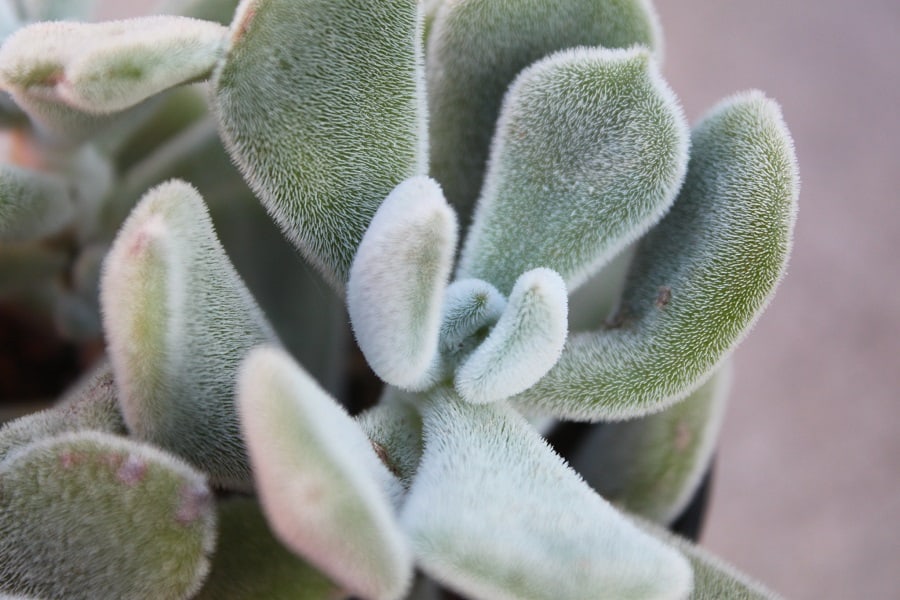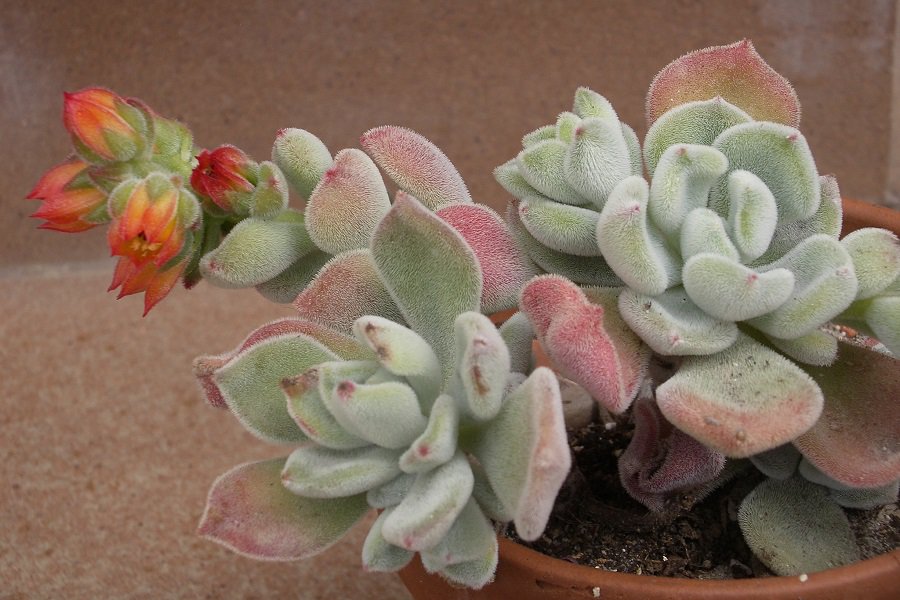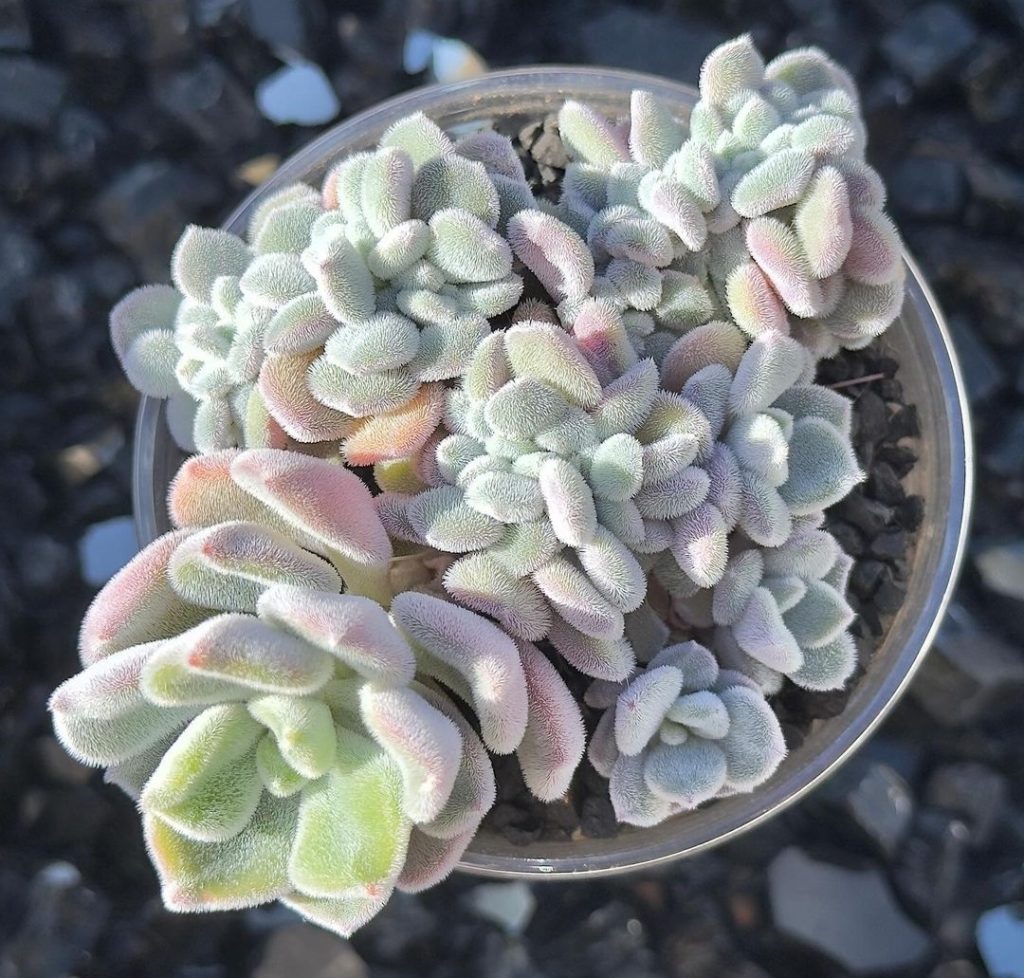Echeveria Frosty: The Ice Queen of Succulents
Imagine a succulent so frosty and incandescent, it stops you dead in your tracks. With shimmering silver foliage that seems to glow from within, Echeveria ‘Frosty’ is an otherworldly beauty deserving of royal status. This icy stunner will have you under its spell from the moment you lay eyes on it. Read on to unlock the secrets of growing your very own Ice Queen!

Contents
About Echeveria Frosty
Echeveria Frosty, also known by its scientific name Echeveria pulvinata ‘Frosty’, is a variety of succulent in the Crassulaceae family. As it matures, this small perennial forms a splendid rosette up to 5 inches tall and 8 inches wide.
The thick, fuzzy leaves are brushed in dreamy shades of silver, blue-green, and lavender that give the plant an ethereal, frosted appearance. In spring, bright orange-yellow bell-shaped flowers add a vibrant pop of color. Truly a fairytale succulent come to life!
Check this out:
160+ Amazing Echeveria Types with Pictures

Echeveria Frosty Care Guide
Light Requirements
Like an icy monarch, the Frosty demands her daily sun. She thrives in bright, direct light for at least 6 hours per day. Outdoors in summer is perfect, but make sure to acclimate slowly to prevent sunburn.
If growing indoors, situate in a sunny, south or west-facing window. Can’t provide enough sunlight? Use a grow light! Place the Frosty about 6-12 inches below fluorescent or LED grow lights for 12-16 hours per day.
Without adequate light, this succulent will become leggy and stretched out as she desperately reaches for rays. Lack of sun may also prevent her from developing that frosty, colored hue you crave.
Soil Needs
The regal Echeveria Frosty can’t stand having wet feet. Give her a well-drained soil mix made specifically for succulents. This gritty blend allows excess moisture to escape freely while providing just enough nutrients.
When potting or repotting (which should only be done every 2-3 years), choose a container with drainage holes to prevent soil from becoming overly saturated. Allow the soil to fully dry before watering again.
Water Requirements
Like most succulents, underwatering is vastly better than overwatering for the fussy Frosty. Her plump, fleshy leaves store plenty of moisture reserves.
In spring and summer’s warmth, provide a deep soak whenever the soil is completely dry down to the roots, about every 2 weeks or so. Allow the container to fully drain after watering.
During winter’s chill, cut back on watering significantly, only hydrating enough to keep leaves from shriveling. Water directly onto the soil, avoiding the rosette to prevent rot or fungus.

Fertilizer
While not an absolute must, Echeveria benefits from a bit of plant food during her active growth in spring and summer. Use a balanced fertilizer formulated specifically for cacti and succulents, diluted to half strength.
Feed lightly once monthly when the soil is already hydrated. Too much fertilizer can cause root burn and damage those lovely frosted leaves.
Climate Preferences
Despite her frosty name, Echeveria ‘Frosty’ prefers warm and dry conditions. She thrives in temperatures between 65-80°F during her active growing season of spring and summer.
As winter approaches, allow the temperature to dip down to the 50-60°F range to simulate her dormant cool-down period. Protect from freezing temperatures and cold drafts.
Too much humidity is also the enemy of the Ice Queen. Maintain humidity levels around 40-50% to prevent rot and other moisture issues. Provide excellent air circulation, especially if growing indoors.

Potting and Repotting
When potting your Frosty, choose a container with ample drainage holes to allow excess moisture to escape. Terra cotta and unglazed ceramic are ideal as they allow the soil to breathe.
The pot should have enough width to accommodate the rosette’s growth, about 2-3 inches wider than the nursery pot. However, avoid containers that are too large as soggy soil can lead to rot.
Repot every 2-3 years in early spring before new growth emerges. Gently remove the old soil and trim any rotted or dead roots before settling into her new palace with fresh succulent soil.
Pests & Problems
While generally carefree, our Ice Queen can face a few potential pitfalls when care requirements aren’t met. The most common ailments include:
- Rot – Soft, mushy, discolored leaves and moisture issues are signs of rot from overwatering or poor drainage. Remove affected parts and adjust watering.
- Stretching – Compact growth that becomes thin, pale, and leggy indicates insufficient sunlight. Move to a brighter spot or use a grow light.
- Pests – Mealybugs, spider mites, and aphids are attracted to the powdery coating. Use an insecticidal soap or neem oil to treat infestations safely.
Echeveria Frosty Propagation Methods

The Frosty’s frosted charms are easily multiplied through several simple propagation methods. This obliging queen will quickly produce many offsets, rosettes, and plantlets to expand her icy kingdom.
Propagating Frosty from Offsets:
- Allow offsets (pups/rosettes) to grow at least 1-2 inches wide
- Use a clean knife or scissors to cut offsets from main plant’s stem
- Allow offsets to callus over for 2-3 days before transplanting
- Plant offsets just below soil surface in well-draining cactus/succulent mix
- Water sparingly after roots have developed in a few weeks
Propagating Frosty from Leaf Cuttings:
- Choose plump, healthy leaves from mother plant’s base
- Allow leaf cuttings to callus over for 2-3 days
- Fill a tray or pot with well-draining gritty succulent soil
- Place cuttings atop the soil vertically, spacing a few inches apart
- Lightly mist the soil to settle cuttings without oversaturating
- In a few weeks, roots and rosettes will sprout from each cutting
Propagating Frosty from Seeds:
- Frosty seeds require a 3-4 month cold stratification period
- Sow stratified seeds shallowly in a seed-starting cacti/succulent mix
- Cover the tray to maintain humidity until sprouts emerge
- Keep soil lightly moist and provide bright filtered light
- Once sprouted, uncover and let soil surface dry between waterings
- Transplant individual seedlings once they develop true leaves
With her prolific nature, you’ll soon have an entire frozen entourage of Echeveria Frosties to admire! Employ any of these easy propagation methods to endlessly multiply this icy beauty.
